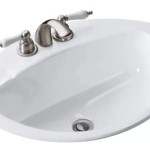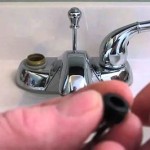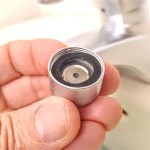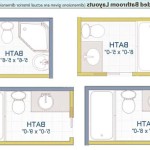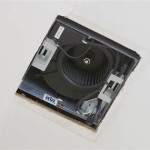Can You Use Vinyl Plank Flooring In Bathrooms?
Vinyl plank flooring has become a popular choice for homeowners due to its durability, aesthetic appeal, and relatively easy installation. Its water-resistant qualities make it an attractive option for areas prone to moisture, such as kitchens and bathrooms. However, the suitability of vinyl plank flooring in bathrooms requires a deeper understanding of its properties and the specific conditions of a bathroom environment.
Vinyl plank flooring broadly encompasses two main types: luxury vinyl plank (LVP) and vinyl tile (also often available in plank format). Both possess characteristics that make them potentially suitable for bathrooms, but their performance hinges on factors such as the quality of the material, the installation method, and the overall humidity levels and water exposure within the bathroom.
The primary draw of vinyl plank for bathroom applications is its inherent water resistance. Unlike natural wood or laminate flooring, vinyl plank is constructed from synthetic materials that do not readily absorb water. This is a critical advantage in a bathroom, where spills, splashes, and high humidity are common occurrences. However, water resistance is not synonymous with waterproofness, and improper installation or prolonged exposure to standing water can still lead to problems.
Understanding the Water Resistance of Vinyl Plank
The water resistance of vinyl plank stems from its composition. Most vinyl planks consist of several layers, including a wear layer, a printed design layer, and a core layer. The wear layer, typically made of a clear, durable material like polyurethane, provides protection against scratches, scuffs, and stains. The printed design layer replicates the appearance of wood, stone, or other materials. The core layer, which is the main structural component of the plank, is usually made of PVC (polyvinyl chloride) or a composite material that is inherently water-resistant.
However, the seams between vinyl planks are potential weak points for water intrusion. Even with a tight fit, water can seep into the subfloor if not properly sealed. This is particularly true if the planks are not installed correctly or if the subfloor is uneven, creating gaps between the planks. Furthermore, some lower-quality vinyl plank products may have a less dense or less robust core layer, making them more susceptible to water damage over time.
Waterproof vinyl plank options are available. These planks are constructed with a completely waterproof core, often made of WPC (wood-plastic composite) or SPC (stone-plastic composite). SPC cores are generally denser and more rigid than WPC cores, offering enhanced stability and resistance to indentation. Regardless of the core material, a key factor in achieving a truly waterproof floor is ensuring that the seams are effectively sealed, either through a tight locking system or by applying a waterproof sealant.
Installation Methods and Their Impact on Water Resistance
The installation method significantly impacts the long-term performance of vinyl plank flooring in a bathroom. There are typically three main installation methods: glue-down, click-lock (also known as floating), and loose-lay.
Glue-down vinyl plank involves adhering the planks directly to the subfloor using a specialized adhesive. This method provides a strong and secure bond, minimizing the risk of water seeping between the planks. However, glue-down installation requires a perfectly smooth and level subfloor to prevent unevenness and potential gaps. It also makes future repairs or replacements more challenging, as the planks are firmly attached to the subfloor.
Click-lock vinyl plank, also known as floating vinyl plank, utilizes an interlocking system that allows the planks to snap together without the need for adhesive. This method is generally easier and faster to install than glue-down, making it a popular choice for DIYers. However, because the planks are not directly adhered to the subfloor, there is a greater risk of water seeping between the seams if the locking system is not tight or if the subfloor is not perfectly level. Using a waterproof underlayment beneath the floating floor can add a layer of protection against moisture.
Loose-lay vinyl plank relies on the weight and friction of the planks to hold them in place. This method is the easiest to install, but it is also the least secure. Loose-lay vinyl plank is generally not recommended for bathrooms due to the high risk of water infiltration and movement of the planks, especially in areas with heavy foot traffic or frequent moisture exposure.
Regardless of the installation method, proper preparation of the subfloor is crucial. The subfloor should be clean, dry, level, and free of any debris or imperfections. Any cracks or unevenness should be repaired before installing the vinyl plank flooring. A self-leveling compound can be used to create a perfectly smooth surface, ensuring that the planks lay flat and the seams are tight.
The Importance of Ventilation and Maintenance in Bathrooms
Even with water-resistant or waterproof vinyl plank flooring, proper ventilation and maintenance are essential for preventing moisture-related problems in bathrooms. Bathrooms are naturally humid environments, and prolonged exposure to high humidity can create conditions that promote mold and mildew growth, even if the flooring itself is resistant to water.
Adequate ventilation helps to remove excess moisture from the air, reducing the risk of condensation and water damage. A properly functioning exhaust fan is crucial for removing steam and humidity after showers and baths. The exhaust fan should be sized appropriately for the size of the bathroom and used regularly. Opening windows, when possible, can also help to improve ventilation.
Regular cleaning and maintenance are also vital for maintaining the appearance and longevity of vinyl plank flooring in a bathroom. Spills and splashes should be cleaned up promptly to prevent water from seeping into the seams. Avoid using harsh chemicals or abrasive cleaners, as these can damage the wear layer of the flooring. A mild detergent and water are typically sufficient for cleaning vinyl plank flooring. Avoid excessive water when cleaning, and always dry the floor thoroughly afterward.
Consider using bath mats or rugs in areas prone to water exposure, such as near the shower, bathtub, and sink. These mats can help to absorb water and prevent it from reaching the flooring. Regularly inspect the flooring for any signs of damage, such as cracks, gaps, or discoloration. Address any issues promptly to prevent them from worsening over time. Re-caulking around the edges of the room and around fixtures such as toilets and bathtubs will also help to prevent water from seeping into the subfloor.
In conclusion, using vinyl plank flooring in bathrooms is a viable option, provided that the appropriate type of vinyl plank is selected, the installation is performed correctly, and proper ventilation and maintenance practices are followed. The inherent water resistance of vinyl plank makes it a suitable choice for bathrooms, but it is not a foolproof solution. Taking the necessary precautions and paying attention to detail will help to ensure that your vinyl plank flooring remains beautiful and functional for years to come.

Vinyl Planks In Bathrooms Residential Inspiration Flooring

Dos And Don Ts For Installing Vinyl Plank Floors In The Bathroom Advice Homeowners

How To Install Vinyl Plank Flooring In A Bathroom Fixthisbuildthat

Can Vinyl Flooring Be Used In A Bathroom Hallmark Floors

Luxury Vinyl Flooring Is A Great Choice For Chic Bathrooms

Installing Vinyl Plank Flooring Lifeproof Waterproof Rigid Core Sustain My Craft Habit

Bathroom Flooring Pros And Cons

Installing Vinyl Plank Flooring Lifeproof Waterproof Rigid Core Sustain My Craft Habit

Upstairs Full Bath

Best Flooring In Portland For Bathrooms
Related Posts
